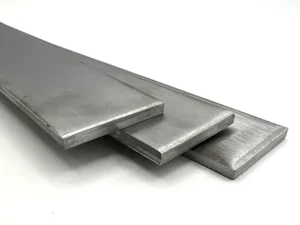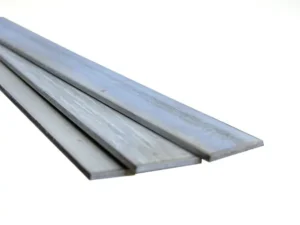The steel cut of a knife determines its functionality, longevity, and maintenance needs. 1095 and 1075 carbon steels are among the most popular knife-making steels. Of the two, 1095 is certainly a preferred item. Since both belong to high-carbon steel, their usefulness is slightly different. This page discusses the relationship between 1095 and 1075 steels, their usage, and how to pick the best one for your requirements.
What Are 1095 and 1075 Steels?
1095 High Carbon Steel

With a carbon content of about 0.95 percent, 1095 steel is a high-carbon steel and one of the hardest in its respective group. The high carbon content reliably ensures superb edge retention, increased sharpness, and enhanced wear resistance. Its durability makes it a go-to steel for knife makers, especially for creating blades and tools that need to be sharp for longer periods.
Key Characteristics:
- Hardness: High hardness level, generally 55 to 60 HRC after heat treatment.
- Edge Retention: A level of sharpness that can last over most other steels.
- Corrosion Susceptibility: A high likelihood of rust due to low chromium content.
- Applications: This is mostly used to create tactical knives, precision tools, and fixed blades.
1075 Carbon Steel

In contrast, 1075 steel has a carbon composition of roughly 0.75%, which accounts for an ideal mix of toughness and hardness. Although 1075 steel does not reach the hardness of 1095 steel, it is also not as brittle, which makes it versatile and suitable for a wide range of tasks that require impact bearing and wear and tear.
Key Characteristics:
- Hardness: Moderate hardness, typically ranging between 50 to 55 HRC.
- Toughness: Improved shock resistance and ductility when compared to 1095 steel.
- Ease of Sharpening: Softer hardness makes sharpening slightly easier.
- Applications: Commonly used in making big blades such as machetes and bushcraft knives.
| Element | 1095 steel | 1075 steel |
|---|---|---|
| Carbon | ~0.95% | ~0.75% |
| Manganese | 0.30-0.50% | 0.30-0.50% |
| Chromium | Trace | Trace |
| Hardness (HRC) | 55-60 | 50-55 |
Performance Comparison: 1095 vs. 1075 Steel
Edge Retention
Winner: 1095 Steel
Since 1095 steel contains more carbon, it has superior edge retention and can maintain a sharp edge for a longer duration, which makes it ideal for cutting tools that use general knives.
Toughness
Winner: 1075 Steel
As the carbon concentration is lower in 1075 steel, it’s tough, which makes it less brittle and ideal for heavy-impact tasks such as batoning and chopping.
Ease of Sharpening
Winner: 1075 Steel
Despite both steels being easier to sharpen than stainless steels, 1075 steel can be honed more easily because of its softer hardness.
Corrosion Resistance
In comparison, they both have low chromium content, which makes them susceptible to corrosion and rusting. Hence, regular maintenance, such as oiling often and not exposing them to moisture for long periods, is crucial to keep these high-quality steels in top condition.
Wear Resistance
Winner: 1095 Steel
The extreme hardness of 1095 steel makes it more wear-resistant and abrasion-resistant.
Applications of 1095 and 1075 Steel
1095 steel
1095 steel is best suited for applications where sharpness, precision, and durability are important. Its great edge holding and hardness make it a good choice for knife makers to make smaller knives, tactical blades, and other cutting tools.
Common Uses:
- Hunting knives
- Swords
- Kitchen knives
- Tactical and combat knives
1075 steel
1075 steel is a bit tougher and impact-resistant, making it more applicable where high toughness is needed. It has balanced qualities and is suitable for large, heavy knives and other cutting tools.
Common Uses:
- Machetes
- Bushcraft and survival knives
- Swords with high-impact resistance
- Outdoor tools
Cold Rolled Annealed (CRA) 1095 and 1075
Cold-rolled annealed non-tempered steel versions are CRA 1095 and CRA 1075. This process improves the workability of these steel grades and makes manufacturing easier.
CRA 1095 Steel:
- As a result, it has more uniform hardness and a finer grain structure.
- Usually utilized in sectors that require accuracy and sharpness/finishing.
CRA 1075 Steel:
- Gives a reasonable level of flexibility and strength.
- Recommended for tools where a contact load is repeated.
FAQs: 1095 vs. 1075 Steel

What is the variation between 1095 and 1075 steel?
The principal variation is the weight percent of carbon. 1095 steel has a higher carbon content than 1075 steel (0.95 % vs. 0.75%). This means that 1095 steel has greater hardness and edge durability, whereas 1075 steel has greater toughness and better shock resistance.
Is 1095 Steel Suitable for Knives?
Yes, 1095 steel can be recommended for knives. It has the required sharpness, edge durability, and resistance to wear for application in hunting knives, tactical blades, and precise cutting knives. However, it is important to note that regular maintenance free from rust is needed.
Is 1075 Steel Ideal for Knife Production?
Yes, 1075 steel is a good alternative for knife production. Its good strength and toughness make it suitable for larger blades and other tools that operate under heavy duty.
What About the Comparison of 1095 and 1075 in Corrosion Resisting?
Both steels contain minimal chromium, and thus, corrosion will be evident. They need to be cared for by oiling often and not exposing them to moisture for long periods.
Which Steel Is Best in Fabrication?
Regarding fabrication, 1075 steel is significantly superior because of its lower carbon content. Furthermore, its sharpening capability is closer to 1095 steel, except it is more forgiving throughout heat treatment.
What Are Popular Brands or Makers Using These Steels?
- 1095 Steel: Manufacturers like ESEE Knives, Ontario Knife Company, and Ka-Bar frequently utilize 1095 steel for their products.
- 1075 Steel: Condor Tool & Knife reportedly manufactures high-quality 1075 steel composite blades.
Pros and Cons of 1095 and 1075 Steel
1095 Steel:
Pros:
- Delivery expectations.
- Ability to hold an edge well.
- Wear-resistant.
- Relatively easy to sharpen.
Cons:
- Can shatter in severe impact circumstances.
- Rusts easily.
1075 Steel:
Pros:
- Toughness and shock absorption are ideal.
- Easier to sharpen.
- Harder to mess up throughout the procedure.
Cons:
- Somewhat worse at holding an edge.
- Rust prevents you from being lazy and requires you to work more.
1095 vs. 1075 Steel: Which Should You Choose?
Choose 1095 Steel If:
- Regular usage involves cutting, and the object requires a strong and sharp blade.
- Edge retention is most important to you.
- Maintenance isn’t a concern, and the task requires an edge holder.
Choose 1075 Steel If:
- Jobs contain excessive use, and a heavy-duty blade is required.
- Maintenance and sharpening aren’t a concern, so a softer steel is preferred.
- Matching or fabrication focusing on an easily adjustable blade with fewer sleepless nights is required.
Conclusion
If you were to choose between 1075 and 1095 steels, it wouldn’t be a difficult decision. They both are remarkable steels for knives, each possessing relatively unique benefits. While 1095 offers the greatest retention of sharpness and cutting ability, 1075 offers improved toughness and ease of sharpening. Understanding their application will determine which steel is best for your needs. With such knowledge, you will either make or buy a knife that is ideal for your situation and which you expect to perform well.
